June 2019
Have you ever stood in a stadium with full LTE signal, but been completely unable to use the internet on your phone? It’s a situation one might think would be nearly impossible, given the widespread deployment of LTE-Advanced networks across the US. As networks deploy their 5G services, we are even seeing reports of speeds in the gigabit range. Of course, these speeds only happen under “ideal” network conditions, and most of us are still using a 4G connection - but all things considered, you’d think that the “LTE” symbol plus full bars of signal would mean you’d get at least the average download speed for each operator, upwards of 10 Mbps.
The problem, as many of us can attest, is that this isn’t always the case. By analyzing the results from over 15 million speed tests taken when devices were showing full bars of signal, Tutela can show where, and how often, the problem of full signal but slow download occurs
Key Findings
- AT&T users saw full LTE signal but a slow download speed the least often, 1.1% of the time on average. That's nearly three times less than T-Mobile, whose users experienced a slow download speed with full bars 3.1% of the time.
- For three of the four operators (AT&T, Verizon, and Sprint) the Southwestern United States was the worst-performing region.
- Overwhelmingly, tests with slow download speed but full signal were taken during peak hours, indicating that network congestion may be the underlying cause for the problem.
Results
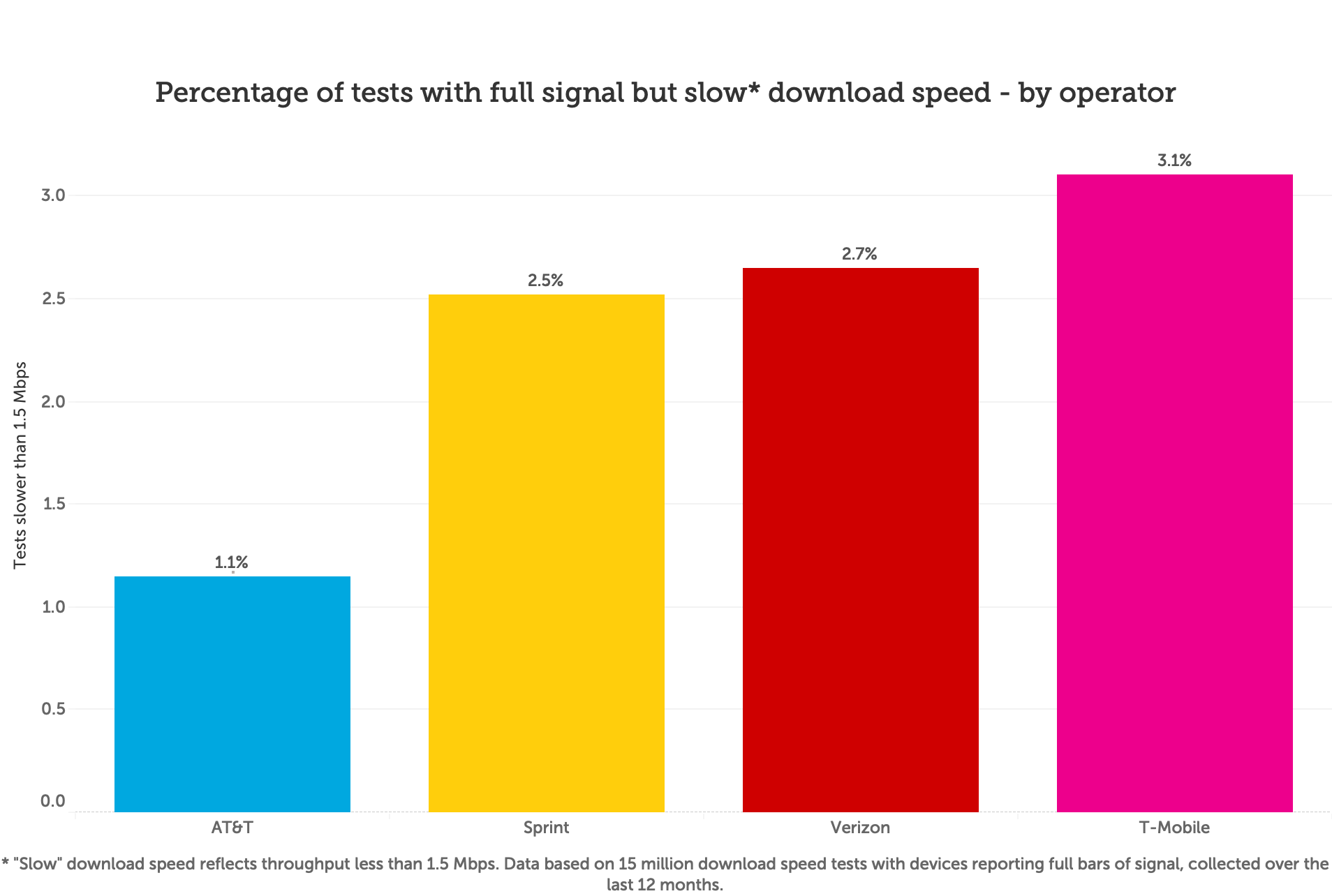
According to Tutela’s findings, users with full bars of signal get a speed less than 1.5 Mbps between about 1-5% of the time, depending on the carrier, device and location. Why did we select 1.5 Mbps download speed as our threshold? For one reason, this is the speed Netflix gives as its recommended broadband connection speed, while Skype recommends it for making a HD video call. It’s a good proxy for a slightly demanding, but not unreasonable use case for the standard consumer going about their day-to-day life.
Our results show that, on a national level, AT&T consumers with full signal were most likely to have speeds at least in excess of 1.5Mbps -- with only 1.1% of tests falling below this threshold. In comparison, T-Mobile had nearly triple the percentage of tests (3.1%) fall below this threshold.
On a region-by-region level, the results were similar. The worst-performing region for any operator was the West for T-Mobile, which had an average of 4.39% of tests with full signal strength miss the threshold. The best-performing regions were the North East and Mid West for AT&T, which were tied on 0.65%.
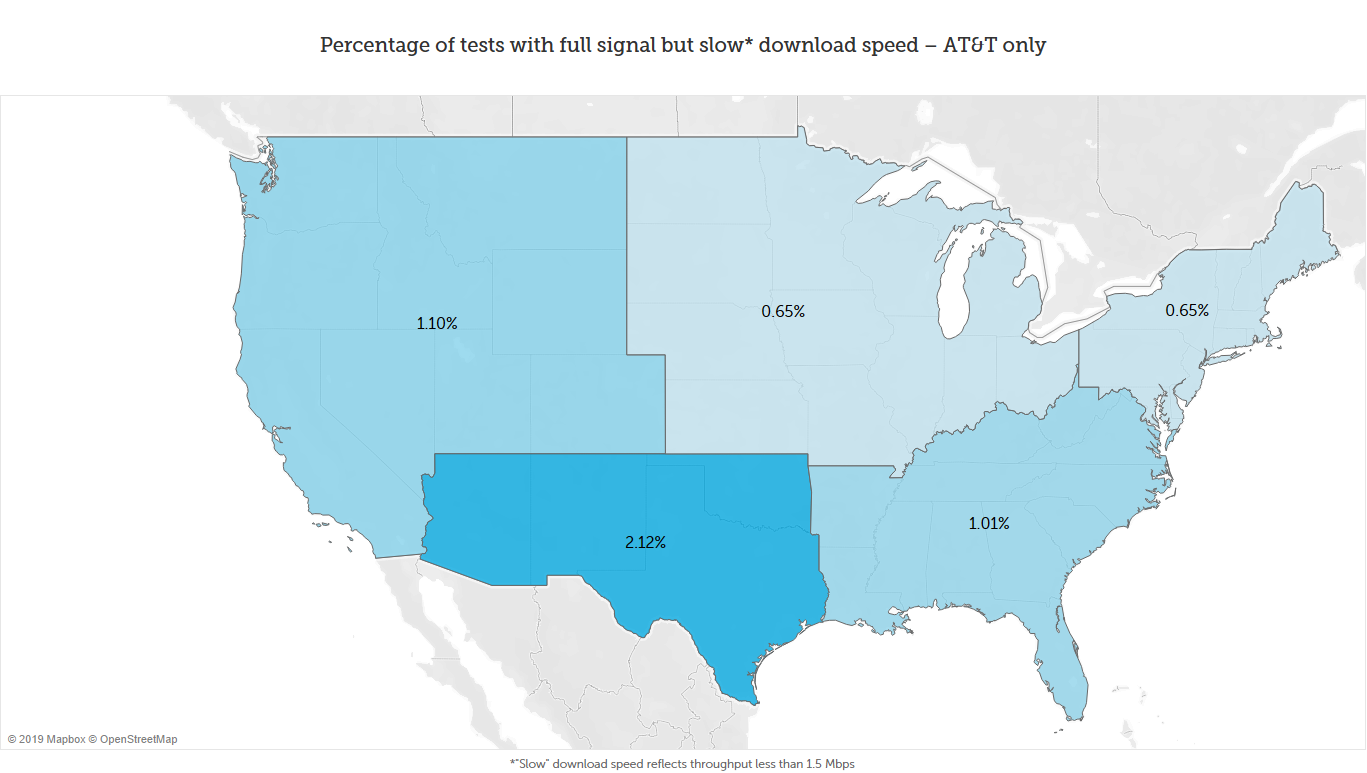
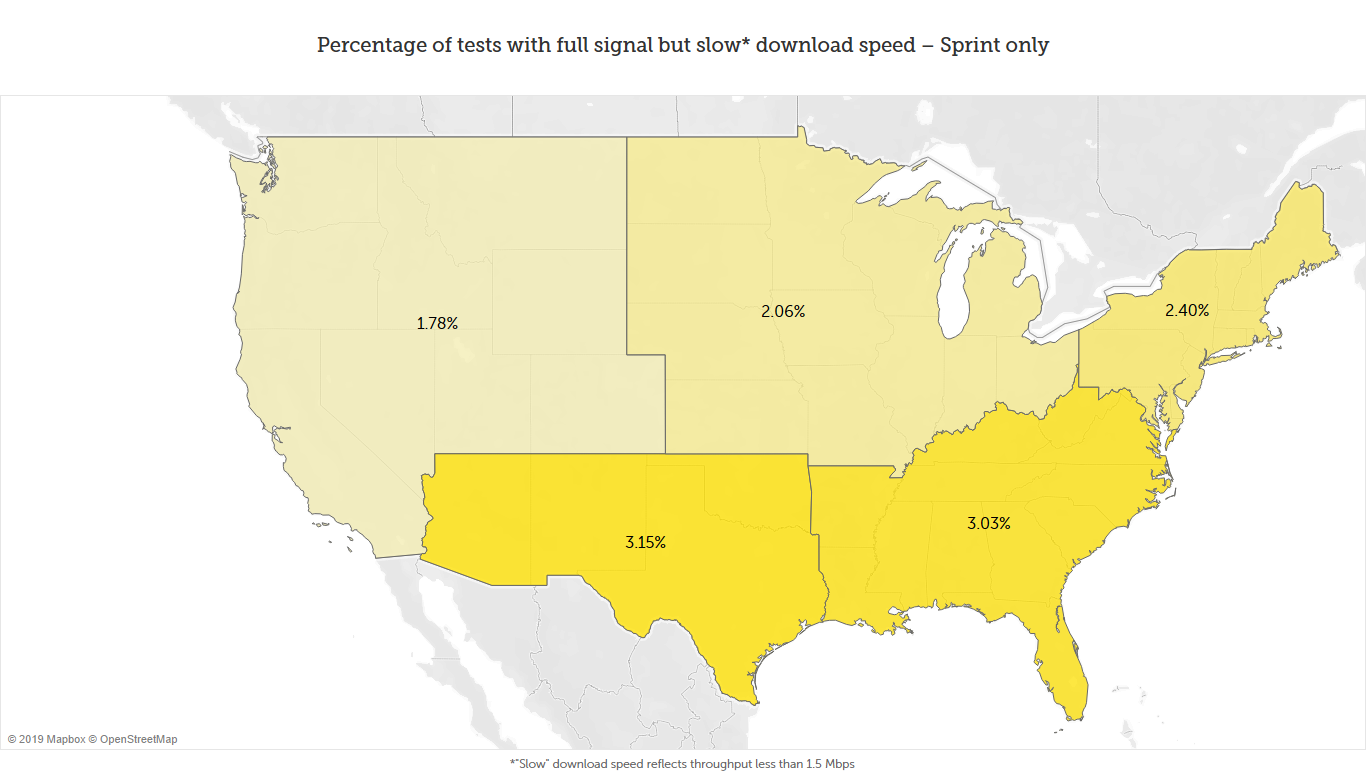
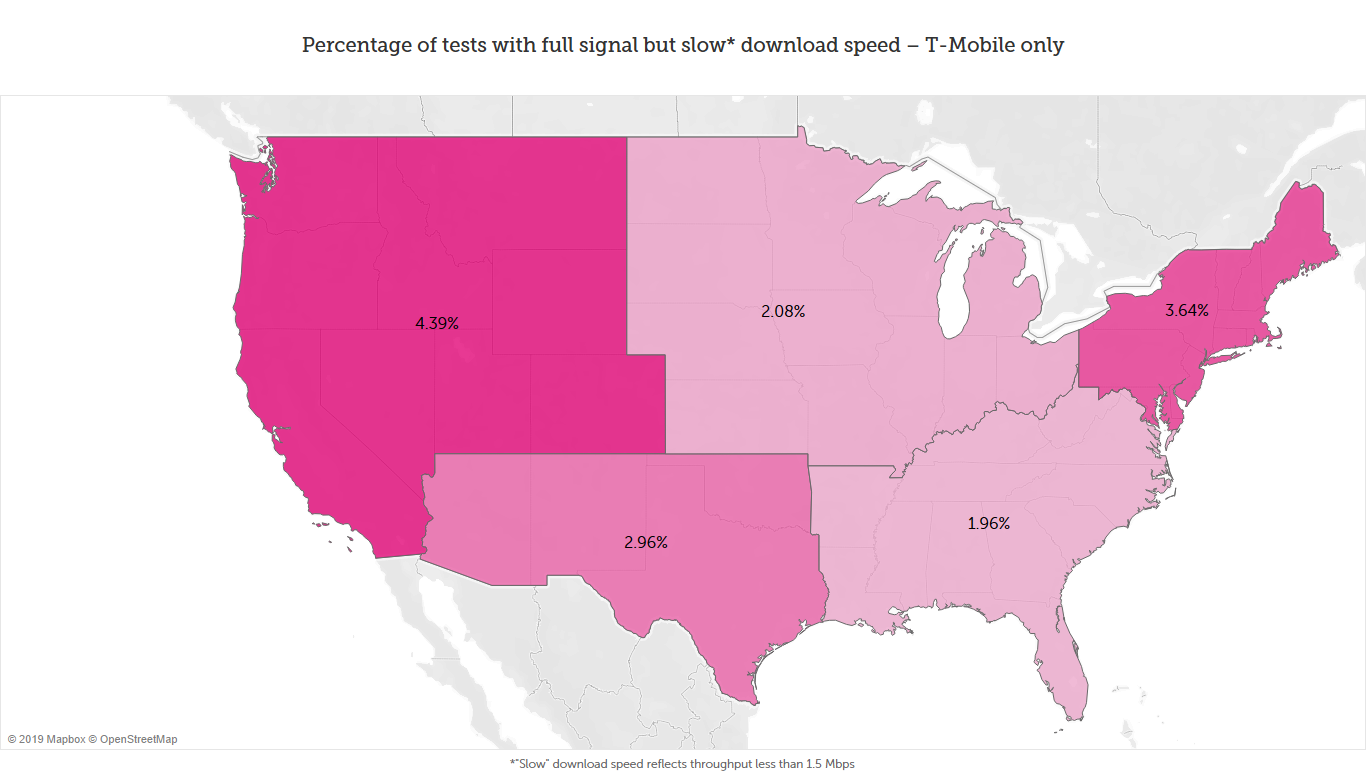
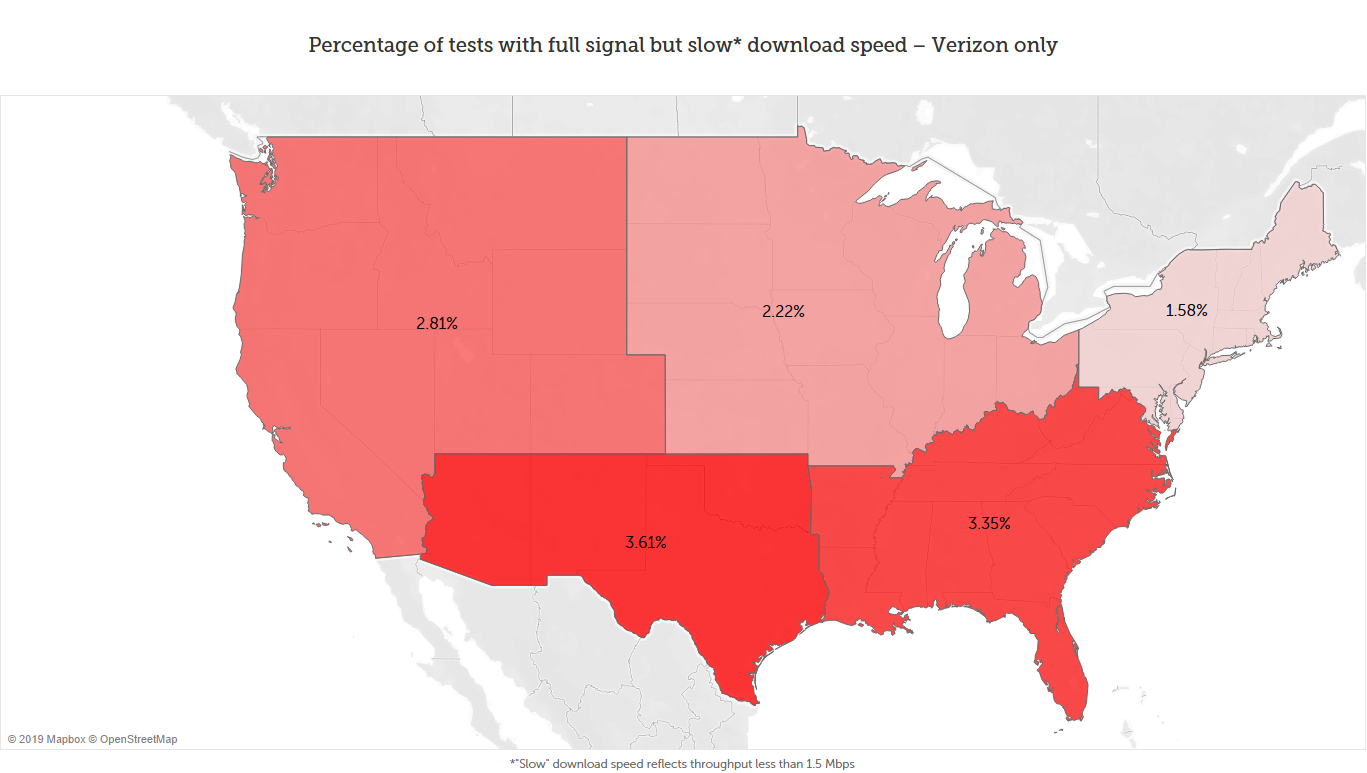
Now as any smartphone aficionado will know, the different chipsets in devices can have a measurable impact on how users experience network performance. We tested the most prominent Android device manufacturers in the US to see how they compared:
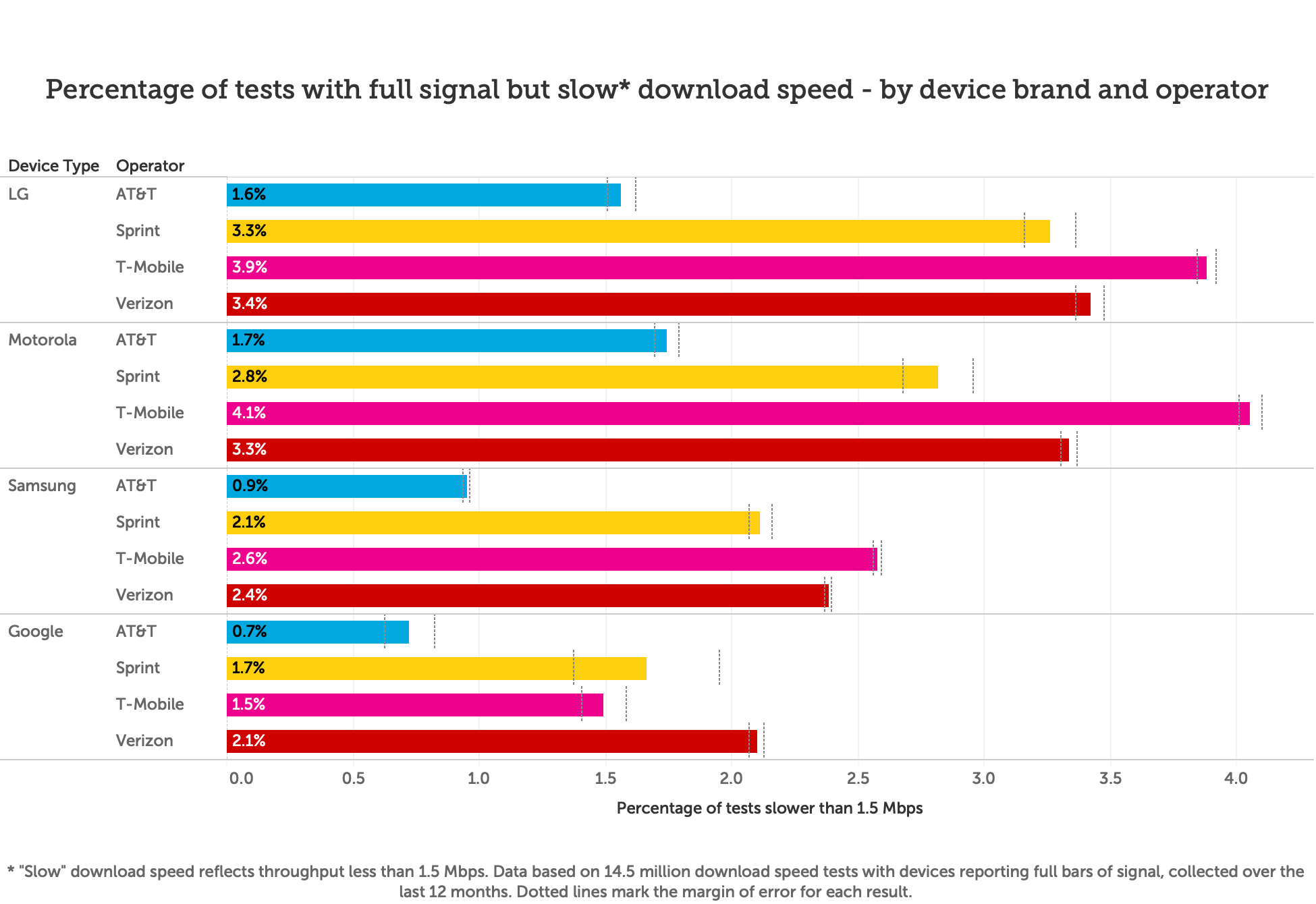
Across all operators, Google devices gave the best showing -- with 99.3% of tests on AT&T faster than 1.5 Mbps, through to 97.9% of tests meeting the same criteria on Verizon. LG and Motorola offered slightly worse results overall. For T-Mobile and AT&T users, Motorola devices had the highest rates of tests under the 1.5 Mbps threshold -- 4.1% of T-Mobile users with a Motorola device and full bars of LTE experienced speeds slower than 1.5 Mbps, and the same was true for 1.7% of AT&T users. Meanwhile, for Sprint customers, LG devices tested below the threshold most often at 3.3% of tests slower than 1.5 Mbps.
Why would a particular manufacturer’s device be slower on one network than another? There could be a few different reasons.
In theory, if operators had a lot of legacy devices from a manufacturer running on the network, this could lead to slower performance. In our testing, we limited our investigation to just devices running Android 7.1 onwards, meaning only relatively recent devices were considered. So what is going on?
One potential cause of a slow download speed whilst having good signal is deprioritization. Operators “deprioritize” some users at busy times to help deal with network congestion, but that deprioritization can happen differently for users on different rate plans. The distribution of device manufacturers across the rate plans is unlikely to be consistent, which could account for some of the differences.
We also considered whether device generation had a significant impact on results. Our results suggested that the percentage of tests below the threshold was not significantly affected by the generation of the phone, for example when comparing the Samsung Galaxy S7, S8 and S9 families. While there was some differences in results between the different models, this was not consistent by operator enough to say that the S9, for instance, offered categorically faster speeds than the S7. We also looked at whether mid-range vs premium handsets made a difference, but again, the change in results suggested there was minimal benefit to one over the other. The upshot? If you consistently have great signal strength but poor download speeds, it’s probably not enough to go out and buy the latest or a more premium phone. It all comes down to your network provider.
Why it matters?
As users move to more data-centric use cases -- like video streaming, VOIP calls and mobile gaming -- it’s becoming ever more important that it’s clear when these use cases will be possible and when they won’t. As it stands, full signal bars (that is, relying on RSRP signal strength measurement) may not be the most effective way to measure this.
To investigate the driving factors for times when signal strength was good but download speeds were below our threshold, we wanted to see if signal quality (as measured by RSRQ) impacted the results. For LTE networks, signal strength is measured by RSRP, and that’s what is used to show the bars of signal on a smartphone. RSRQ represents the amount of interference from neighbouring wireless channels, and as such, you might expect it to be a better predictor of a fast download speed than RSRP.
While we saw a slight improvement against the 1.5 Mbps threshold for tests with both a high signal strength (RSRP) and signal quality (RSRQ), the change was relatively small.
Instead, what we found was that it was during peak usage hours that networks were most likely to show full bars of signals but deliver slow speeds. The overwhelming majority of download tests with full signal but less than 1.5 Mbps download speed were taken during peak hours, and across all operators, the percentage of tests below the threshold was under 0.2%.
This suggests that what’s really at play here is network congestion -- when there’s just more traffic on the network than it can reliably support, users may see full bars of signal but experience poor download speeds.
There’s not a lot consumers can do to improve the situation themselves; often we can’t just decide to use our device at a different time of day. However, dealing with network congestion is a strategic priority for operators. In the short- to mid- term, operators can look to deploy more spectrum and more cell towers to help manage the load and reduce the impact on consumers. In the longer term, 5G could potentially offer relief for networks in some of the most congested parts of the US. However, we’re still several years away from having 5G as a mainstream technology.
